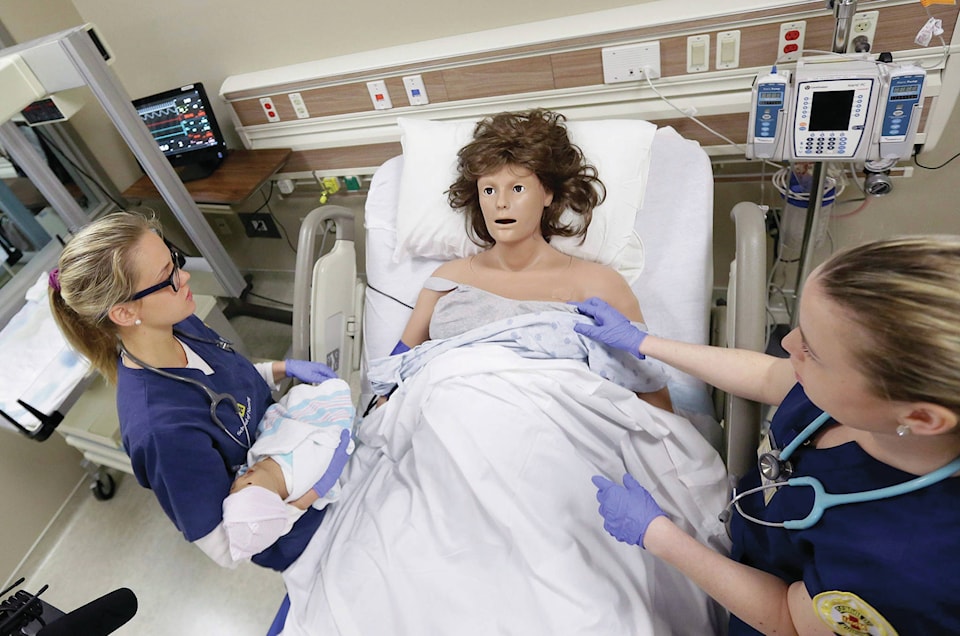Lying on the table, surrounded by two nurses, a woman shrieks in pain, “There’s something horribly wrong!”
She’s in labor, and nurse Shanti Fernandez is helping to deliver her baby. While another nurse assures her that everything will be fine, Fernandez pulled out a healthy baby boy —made of silicone.
Behind a glass window, Miami Dade College nurses control the movement of the mannequin lying on the table, named Victoria, and her baby’s movements from a set of computers. They can launch pre-programmed medical simulations —the mother may have a Cesarean section, or her baby may have a dislocated arm —and adjust them according to the nurses’ responses.
And right behind them is another Victoria who can do all the same things.
“They’re amazing, everything they are capable of doing,” Fernandez said. “These pretty much can do anything.”
The two Victorias join 15 other simulation rooms in MDC’s new Center for Learning, Innovation and Simulation, unveiled recently at the MDC Medical Campus. It will begin serving the college’s 1,700 students in the fall.
The five-story, $56-million building is made to look like a real hospital, complete with operating rooms, examination tables and medicine and equipment dispensers.
The new facility is intended to provide students with the technology to keep pace with the rapid growth in demand for skilled health care professionals. And the “high-fidelity” mannequins that populate the hospital beds provide students with realistic practice before they begin treating actual patients.
“We kill the plastic people so we don’t kill the real people,” EMS program coordinator Michael Yoder said.
The mannequins shed tears, bleed, blink and move. Those controlling them can choose from a laundry list of facial expressions, conditions and complications. Each simulation room is equipped with cameras, so students and professors can debrief procedures.
Among the advantages of mechanized medical education is the level of control instructors have over the conditions each faux-patient experiences, allowing students to gain experience dealing with conditions and crises that they may not encounter in the field.
“You don’t always get to see a labor,” said nurse Mary Worsley. “This way, when they go in, it’s not a big surprise.”
Down the hall from Victoria sits a simulated ambulance that moves as if it were being driven through traffic, challenging students to inject a mannequin with an IV or rescue it from cardiac arrest as if they were en-route to the emergency room.
Outside the third floor, where the majority of the simulators are housed, the facility has a mock physical therapy center, histology center and 72 hospital beds.
A market that’s expected to exceed $3 billion in the next five years, healthcare simulators have been popping up all over the world. Miami-Dade College’s new center joins the University of South Florida and Florida Atlantic University in providing simulated medical education.
Plans for MDC’s center began in 2010. Drawing from visits of medical centers throughout the country, designers spent six years crafting the blueprint before beginning construction in 2016.
While Medical Campus President Bryan Stewart, Ph.D, affirms that 100% of the facility will be available to MDC students, he is also looking to make the center available to those outside of Miami-Dade College. Baptist Hospital, Jackson Memorial Hospital, Mount Sinai Medical Center and Miami Jewish Health Systems are among the hospitals eyeing the new center for potential training partnerships for staff, he said.
“It’s really a game-changer,” Stewart said. “It’s hard to do it justice until you’ve actually been able to look in it.”
